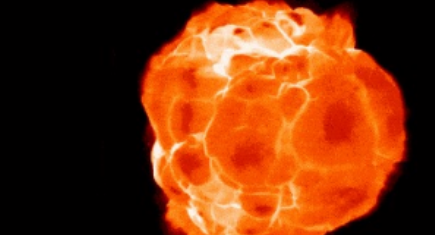Unraveling the Mystery of Betelgeuse Alleged Rapid Rotation

The recent “sneeze” incident of Betelgeuse may have faded from memory, but prior to that, scientists had noted an even more perplexing phenomenon surrounding the massive star. Early observations indicated a rotation speed of 5 kilometers (3.1 miles) per second, a rate far exceeding expectations for stars of its type and age.
READ: Navigating Amsterdam’s Waterways: A Canal Cruise Experience
Betelgeuse
However, new research led by astrophysicist Jing-Ze Ma of the Max Planck Institute for Astrophysics proposes a compelling explanation. According to their findings, Betelgeuse’s turbulent surface activity, rather than rapid rotation, may have created an optical illusion.
Traditionally, star rotation is determined by analyzing the Doppler shift in light emitted from opposite sides of the star. Yet, Betelgeuse, at its red supergiant stage, exhibits intense surface convection, akin to boiling. This vigorous convection generates massive convective cells, some as large as Earth’s orbit around the Sun.
Ma and his team conducted intricate 3D simulations to explore whether these convective processes could mimic the appearance of rapid rotation in observational data, particularly from the Atacama Large Millimeter/submillimeter Array (ALMA). Their simulations revealed that ALMA’s resolution isn’t sufficient to differentiate between convective cells and rotational motion, leading to misinterpretation of the data as rapid rotation.
While these simulations don’t definitively disprove Betelgeuse’s high rotation rate, they underscore the complexity of interpreting observational data from such dynamic stars. Ongoing high-resolution observations, currently under analysis, promise to shed further light on Betelgeuse’s behavior.
If Betelgeuse indeed exhibits rapid rotation, it could suggest a history of interactions with companion stars. Conversely, a more sedate rotation rate would prompt scientists to exercise caution when interpreting data on unstable stars like Betelgeuse.
Astronomer Andrea Chiavassa of the French National Centre for Scientific Research emphasizes the importance of continued research to unravel the mysteries surrounding colossal stars like Betelgeuse. The quest for understanding their internal workings, mass loss mechanisms, and unexpected fluctuations remains paramount, with advanced telescopes like ALMA playing a crucial role in this endeavor.




